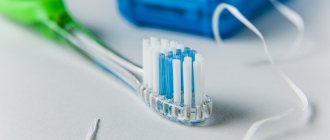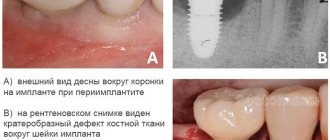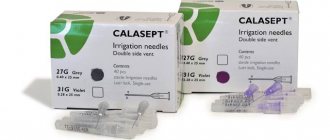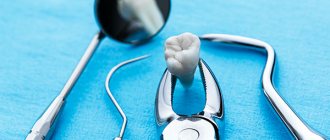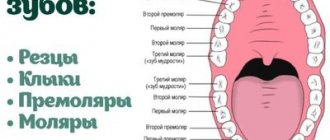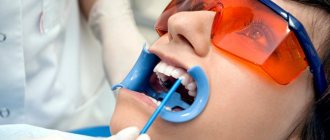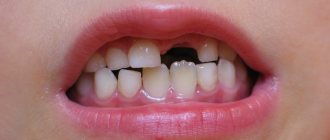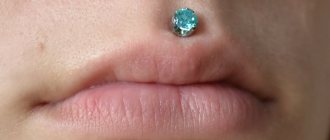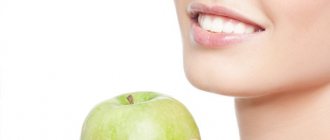Find out more
The need to maintain hygiene
More than 15 thousand bacteria and microbes live in the mouth. By feeding on food particles, they secrete acids that corrode tooth enamel. If you do not follow a set of hygienic measures, a carious cavity will form.
Oral hygiene includes disinfecting measures aimed at removing dental plaque. Maintaining these steps is an important step in preventing dental disease.
By following the rules of cleanliness you can achieve:
- fresh breath;
- healthy enamel color;
- destruction of pathogenic microflora;
- high quality teeth;
- prevention of caries, gum disease and periodontal disease.
Every person needs increased oral care, especially smokers and people with weak immune systems.
Do you need to brush your teeth?
Alas, many parents still mistakenly believe that there is no need to care for baby teeth, and all care and care should be directed to the molars. However, such an opinion is fundamentally wrong. It is imperative to brush your baby's teeth.
- Firstly, the enamel of baby teeth is very weak, and caries affects fragile incisors and molars very easily.
- Secondly, mother's breast milk and formula contain a significant amount of sugar, which inevitably affects the baby's teeth.
- Thirdly, teeth affected by caries can become a source of infection in the oral cavity. Dangerous bacteria can spread throughout the body, causing serious diseases in the baby, such as tonsillitis or pyelonephritis and, of course, subsequently “infecting” the molars.
- Fourthly, it is important to form the habit of brushing your baby’s teeth from a very early age.
It is important for moms and dads to understand that visiting dentists at a young age can be very frightening for a child. Neglected caries can very quickly develop into pulpitis, and the baby’s tooth will be removed, which will inevitably affect the chewing process and the formation of the child’s bite.
Types of hygiene
Measures to maintain the microflora of the oral cavity are divided into 2 types:
- Personal hygiene.
This is the basis for maintaining healthy teeth, preventing gum inflammation, caries and enamel destruction. High-quality and effective personal hygiene is not only about brushing your teeth. And it is advisable to know the basic measures to maintain “order” in the mouth from childhood.
- Professional cleaning.
It is performed by a dentist in a medical office.
It is important to note that these points do not exclude, but complement each other. It is necessary to undergo a preventive examination (2 times a year), observe the rules of personal hygiene and periodically resort to deep cleaning. All this will help prevent oral diseases and maintain the attractiveness of your smile.
First visit to the dentist
The first visit to a pediatric dentist should take place after the first four teeth have erupted. A pediatrician is a doctor who primarily deals with the treatment of young children and has a special approach and knowledge in this area. At the first visit, the doctor assesses the condition of the teeth, the correctness of eruption and checks for signs of caries. The first visit is called an adaptation visit, during which the child gets acquainted with the doctor, the office and wakes up for the first time in front of the dentist. This visit mainly introduces the child to a new environment and explores the oral cavity. If there is already a need for treatment, it will be carried out at the next visit.
Baby teeth are of great importance for the health and proper development of the child. They are responsible for proper bite, proper food intake, and influence the development of permanent teeth and the child’s entire face.
Make an appointment with a dentist at Apollonia Dental Clinic.
Feature of carrying out independent hygiene procedures
A full range of hygiene procedures includes:
- Using a toothbrush.
They are traditional (manual), electric and ultrasonic. It is believed that an electric brush is more effective in combating deposits and removing plaque. Many people are concerned about the issue of gum trauma. However, if the replacement head fits tightly on the brush and there are no chips on its body, it will not cause harm to your teeth and gums. In any case, in order for the cleaning process with any type of brush to be of high quality, it is important to devote at least 2-3 minutes to it.
- Using toothpaste.
Rospotrebnadzor identifies 4 types of the most effective pastes:
- Fluorine-containing. Reduces the risk of developing caries and demineralization of enamel.
- Whitening;
- Desensitizing. Reduces tooth sensitivity;
- With triclosan. They have an anti-inflammatory effect. It is desirable that the paste does not contain sodium lauryl sulfate, sodium cocosulfate, fluorine, or titanium dioxide.
- Using brushes and dental floss.
They remove food debris stuck in the interdental space.
- Use of rinses.
Essentially, these are antiseptic solutions that reduce the number of microbes in the mouth and also eliminate unpleasant odors.
- Using an irrigator.
This is a device that uses water to help clean teeth from food debris. The percentage of oral cavity cleansing is 99%. An irrigator is an intermediate step between home and professional cleaning. But if you want to spend as little money as possible on a dentist and enjoy your dental health as much as possible, then you can’t do without it.
Choosing a brush and toothpaste for your baby
How to choose a toothbrush
Conventional, electric or ultrasonic? Soft or hard? Synthetic or natural? Accurate answers to all questions.
A baby toothbrush looks like this.
It has a short working part - from 18 to 25 mm. Until the age of five, a child has a brush with very soft (extra soft) synthetic bristles, and from a later age - with soft bristles with rounded ends. The handle of the children's brush is thicker, with non-slip inserts - this makes it easier for the baby to hold it. Children's toothpastes
are also different from adults. They are low in abrasives, low in fluoride, and contain fruity fragrances and flavors. Look carefully at what age of children this or that toothpaste is intended for.
Professional cleaning
Since it is impossible to provide proper protection of the oral cavity from caries and other more serious diseases at home, dentists insist on visiting professional cleaning at least twice a year. The main advantages of this procedure:
- reduction of pathogenic microflora;
- increasing local immunity;
- removal of dental plaque.
Professional cleaning includes several stages:
- Removing soft plaque using the Air Flow air-abrasive technique. The device precisely delivers a powerful water-air jet, saturated with small abrasive particles, onto the tooth surface. Thanks to this, the area of the periodontal canals is cleared of pigmented plaque.
- Ultrasonic cleaning. Has antibacterial and antimicrobial effects. Thanks to thin attachments, the ultrasonic method helps remove stone from the supragingival part of the tooth, from under the gum and from the gingival canals.
- Polishing enamel with special pastes. To prevent plaque from sticking to the teeth, their surface should be as smooth as possible. Phyto-extracts have a mild whitening effect and also help strengthen the enamel.
- Strengthening fluoride therapy. This stage is not mandatory, but is carried out at the request of the patient. Disposable mouth guards are filled with a special remineralizing gel and placed on the upper and lower jaw. The gel lasts until it forms a thin protective film and is then washed off with water.
“Even with high-quality personal hygiene (and not everyone can boast of it) and cleansing of soft plaque, hard plaque (tartar) forms. This is due to both food debris and the mineral composition of saliva. Dental plaque contains a huge number of bacteria that cause and maintain inflammation in the periodontal tissues (tissues surrounding the tooth). Constantly inflamed gums cause bad breath, bleeding, and the saddest consequence is the destruction (loss) of bone tissue around the tooth. This disease is called periodontitis or periodontal disease, and it is what leads to tooth loss. With age, the rate of formation of hard plaque increases, and the risk of remaining without teeth increases. Regular professional hygiene allows you to promptly remove hard plaque and, therefore, protects teeth from falling out.”
Sergey Andreev
Candidate of Medical Sciences, dentist-therapist, orthopedic dentist, pediatric dentist
How to properly care for your first baby teeth?
The first baby teeth, the lower incisors, erupt at 4-6 months of age. Often this process is accompanied by itching, pain, increased body temperature, the child is irritable and whiny. Teething gels can be used to minimize pain. Gently massage your gums with a cloth soaked in the medicine.
The gel has an analgesic and calming effect. These preparations usually contain chamomile or sage extracts that relieve inflammation, vitamin B5 that supports gum regeneration, and, above all, anesthetics that bring immediate relief. During baby teething, you can give your baby rubber teethers that are safe to bite on, reduce itching, and speed up the tooth extraction process.
Oral Care Tips
We have collected the top 5 tips from dentists that must be followed to keep your teeth beautiful and healthy.
- Don't go to bed with unclean teeth. Otherwise, the microbes will secrete lactic acid, which causes caries.
- Learn proper teeth brushing techniques. For example, clean them with smooth circular movements without strong pressure, hold the brush at an angle of 45 degrees, treat not only the outer, but also the inner and chewing surfaces of the teeth.
- Clean your tongue at the end of each brushing of your teeth, as plaque, consisting of dead mucous cells, food particles and microorganisms, is regularly deposited on it.
- Eat more fruits and vegetables. Plant foods contain dietary fiber that helps remove plaque from your teeth and tongue. In addition, fruits are excellent sources of vitamins to maintain oral health.
- Limit your consumption of starchy and sweet foods. The fast carbohydrates they contain stimulate the growth of cariogenic bacteria.
The order of appearance and change of teeth
Most often, baby teeth appear (and then change to molars) in the following order : lower incisors, upper incisors, upper lateral incisors, lower lateral incisors, canines. But the sequence may be broken.
However, the replacement of milk teeth with molars begin with the loss of the front incisors, as many believe, but with the appearance of molars , the most distant teeth in the jaw at that time, in the place of which there were no milk teeth.
What happens if you don't maintain hygiene?
If you neglect the process of oral hygiene care, it can ultimately lead to many unpleasant consequences. Among them:
- Caries;
- Gingivitis (gum inflammation);
- Candidiasis (infection caused by bacteria of the genus Candida. Manifests itself in the form of a yellowish and grayish coating);
- Periodontitis. This is an inflammatory disease of the gums, characterized by tissue atrophy;
- Stomatitis (inflammation of the oral mucosa).
Free webinars on anti-aging medicine Learn about the features of the Anti-Age Expert International School, as well as the opportunities for improving your medical practice every day. The webinar program also includes fascinating reviews of innovations in anti-aging medicine and analyzes of the most complex clinical cases with recommendations that really work
Find out more
What parents need to remember
The baby should see the dentist for the first time at six months, and the first tooth should be cleaned with a special brush.
Sweets harm the first teeth, but daily brushing with a special children's brush and toothpaste is beneficial. Tags:
- Hygiene
- Teeth
- Preschoolers
- Babies
- Kuzmina
3 comments • To leave a comment you must be an authorized user
- few Hello everyone. I wanted to recommend a cool service to you. Using this service, you can find out for free on your phone. You can also read reviews about the numbers or leave your own if a scammer calls you. Thank you for reading my post. I create useful services for people. https://kto-zvonil.net https://kto-zvonil.net https://kto-zvonil.net https://kto-zvonil.net https://kto-zvonil.net https://kto -zvonil.net https://kto-zvonil.net https://kto-zvonil.net https://kto-zvonil.net https://kto-zvonil.net
- tancuet massage "methods: gently massage the gums"
- irina_golovleva at 6-8 months a child can be given hard cheese, gooseberries, currants, cherries???????!!!!!!!!!!!!!!!!!!!!!!!!!!! !!!
Dental floss
Flosses are used to remove soft plaque from the side surfaces of teeth and from between teeth. Dental floss helps clean hard-to-reach areas that a brush cannot reach. If your teeth and gums are healthy, you can use floss after every meal, as well as after brushing your teeth.
Dental floss is made from natural silk or synthetic fibers (nylon, nylon, acetate). It is better to use artificial materials - they have a fixed thickness, clean the interdental spaces well, do not delaminate, and do not tear.
The surface of the threads can additionally be treated with wax. In this case, it is smoother, penetrates the interdental spaces more easily, and is more convenient to use. Unwaxed dental flosses are not as convenient, but they clean the enamel surface better (such flosses are “rougher”, can separate into fibers, and remove plaque better). The cross-section of the floss can be round, flat, voluminous, or ribbon. The larger the thread, the better it cleans the enamel surface. The flatter the section, the easier the floss penetrates into the interdental spaces. Additionally, the thread can be impregnated with sodium fluoride, chlorhexidine or menthol. Such impregnations generally do not affect the cleaning efficiency. The exception is the antiseptic chlorhexidine, which provides an anti-inflammatory effect.
Floss can only be used if the gums are healthy, not bleeding, and not inflamed. When cleaning teeth with their help, it is important to act correctly: do not press too hard on the side surface of the crown, do not injure the gingival margin.
How to cure tooth decay without a dentist
It is believed that it is impossible to cure a tooth affected by caries without visiting a dentist. But only if it is not caries at the chalk spot stage - this is the initial stage of caries, when calcium is washed out of the tooth enamel. At this moment, the tooth is most susceptible to attack by cariogenic bacteria. But the damage can still be stopped without visiting the dentist.
For example, using remineralizing gels. They contain all the necessary minerals that fill the washed areas: for example, in Tooth Mousse, casein performs this function. This way the tooth regains its original appearance and receives additional protection from carious formations.
Even if a child, at first glance, does not have caries, the gel can be used for prevention.
Gel for strengthening teeth ROCS (ROCS) Medical Minerals with tuber flavor…
Gel for strengthening teeth ROCS (ROCS) Medical Minerals with fruit flavor…
Tooth gel GC Tooth Mousse Strawberry
Tooth gel GC Tooth Mousse Multifruit
